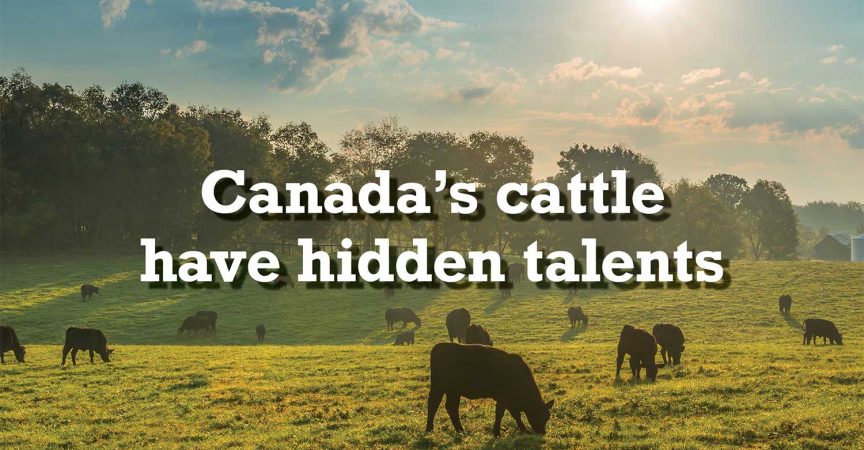Beef cattle belong in Canada’s landscape, maintaining healthy ecosystems
SPONSORED CONTENT
Canadian grasslands capture the carbon emissions of 3.62 million cars annually and the grazing of beef cattle is what maintains the pastures and prairies so that they can continue to support this carbon capture capacity. This is an important point to consider in green house gas discussions. Cultivating these lands releases these carbon stores. And to provide the Canadian perspective, cattle are responsible for 2.4% of Canada’s greenhouse gas emissions, while transportation accounts for 28%. Are cattle the problem in Canada or part of the solution?
Cattle pastures and grasslands are lands that are too rocky, hilly or dry to support growing crops. Cattle feed is primarily grass or forage feeds made from grass. Only 9% of Canada’s cropland is used for cattle feed and it usually feed that is not suitable for human food. Cattle are ‘upcyclers’ – as ruminant animals, they have a digestive system that enables then to take ‘food’ (grass) that we can’t digest and turn it into one of nature’s most powerful protein foods for us. By having cattle graze, we are able to grow our food capacity from land not suitable for other forms of agriculture.
Grasslands can’t be taken for granted as they provide a fragile ecosystem to many bird and wildlife species that have adapted to live in these spaces over thousands of years. If cattle don’t graze grasslands, they are quickly overtaken by shrubs or brush, changing the habitat and what can live there. Our wide expanse of prairie has been a major contributor to the evolution of the species that live there. Without cattle grazing, Canada will loose 68% of the wildlife habitat capacity that comes from our agricultural land. Conservation experts from groups like Bird Studies Canada and Ducks Unlimited are working with ranchers and beef farmers to help keep grasslands tended by cattle as a way to preserve species at risk by maintaining their habitat. With 74% of Canada’s native grasslands already lost to cultivation or other development pressures, cattle grazing is key to preserving these important spaces. To learn more about the Keep Grazing initiative visit https://mhhc.mb.ca/keep-grazing-project/.
Soil is not dirt. Healthy soil is key to life supporting the food systems we need to survive. Soil is alive with millions of microorganisms that help sustain soil. The grasslands provide cover to protect soil from baking sun and pelting rains. Cattle make an important contribution to enriching soil with manure as a natural nutrient source for soil health. Ranchers and farmers will place feeding and water stations around in a pasture to encourage cattle to walk and wander, spreading manure around to promote healthy grass and healthy soil.
Cattle are a perfect fit with Canada’s climate, pasture and prairie ecosystems. Their remarkable contribution to our agriculture systems and food security should not be taken for granted and needs to be part of the environmental footprint discussion.










1 Comments